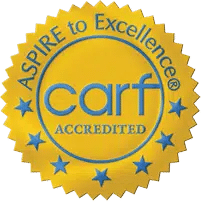


Millions of people in the United States take prescription medications to manage or treat various medical conditions. Some of the most common prescription medications have the potential for abuse that can lead to physical dependence and addiction.
Because addictive prescription drugs are widely available and common, it’s critical to understand the risk of prescription drug abuse and be able to recognize it.
This guide will examine how prescription drug abuse develops, how to identify the signs of prescription drug addiction, and how it is treated. Reach out to the specialists at the Carolina Center for Recovery to learn about prescription drug abuse treatment in North Carolina or to find help during any stage of your recovery.
Many people believe that prescription drugs are safe to use in any circumstance, but this is not the case. Many common prescription medications carry significant health risks if people misuse them, and many can lead to dependence or addiction.
Prescription drug abuse occurs when someone misuses a prescription medication. Prescription drug misuse can include:
Repeated prescription drug misuse can change how the brain works, making it difficult to stop taking them. Over time, people who misuse prescription drugs may develop physical tolerance, meaning they need to use more of a drug to get the desired effects.
Ongoing or heavy prescription drug abuse can quickly become an addiction. People with prescription drug addiction cannot control their drug use–they must use the medication to function.
Prescription drug addiction is common in the United States. Research about substance abuse and addiction suggests that around 18 million people over the age of 12 reported misusing a prescription drug in the past year.
Many prescription drugs have the potential for misuse and addiction because of their effects and how they work within the body. Here are three of the most commonly abused prescription drugs.
Prescriptions for opioid medications began to rise in the 1990s as new drugs were developed to help people manage pain. Since then, a crisis has developed, with millions of people abusing opioids and many dying of opioid-related overdoses each year.
In 2021, an estimated 8.7 million people misused prescription pain relievers, about 5.0 million had a prescription opioid use disorder, and more than 16,700 people died from an overdose that involved prescription opioids.
Common prescription opioids include:
For many people, prescription opioid medications are their first experience with an addictive substance. Doctors typically prescribe these powerfully addictive drugs for short periods to limit the risk of addiction. However, some people still develop tolerance and addiction to them.
People who develop an addiction to prescription opioids may start taking heroin, fentanyl, or other illicit drugs when they can no longer obtain these medications legally.
Stimulants are a type of drug created to increase alertness and energy. Prescription stimulants are used to treat ADHD and other attention-deficit disorders, asthma, obesity, and other medical conditions.
Research has shown that in 2021, about 3.7 million people abused prescription stimulants and 1.5 million had a stimulant use disorder.
Commonly prescribed stimulants include:
People may misuse prescription stimulants for their energizing effects or to sustain focus and attention.
Many people in the United States take prescription medications to manage the symptoms of anxiety, panic, or sleep disorders. These prescription drugs slow activity in the central nervous system, reducing the symptoms of anxiety and panic and providing a sense of calm and relaxation.
Common CNS depressants include:
People may misuse CNS depressants for their soothing, pleasurable effects. Repeated or heavy depressant abuse can lead to tolerance, meaning that people need to take more of the drug to get the effects they want. Over time, people may develop a physical addiction to these drugs.
In 2021, about 3.9 million people abused benzodiazepines and 4.9 million abused prescription tranquilizers or sedatives. About 2.2 million met the criteria for a substance use disorder.
Recognizing the symptoms of prescription drug abuse can be challenging. The symptoms people experience and exhibit depend in part on what prescription drug a person takes.
Some of the most common signs of opioid abuse include:
Signs of stimulant abuse can include:
Some common signs of CNS depressant abuse include:
Regular and long-term prescription drug abuse can quickly turn into a serious substance use disorder.
Prescription drug addiction can have serious health consequences, so it’s essential to be able to spot the signs and seek appropriate care. Signs of prescription drug addiction may include behavioral, physical, and psychological symptoms, including:
Comprehensive prescription drug addiction treatment in North Carolina can help you safely stop using prescription drugs and explore the underlying roots of your addiction. Understanding the complex behavioral, emotional, and physical aspects of your substance use can help you develop the skills to avoid relapse and live a healthy, sober lifestyle.
Prescription drug rehab may be available across multiple levels of care, including:
Treatment for prescription drug addiction typically involves a combination of behavioral therapies, counseling, and in some cases, medication-assisted treatment. It’s essential for individuals struggling with prescription drug addiction to seek help from healthcare professionals or addiction specialists.
Therapies that may be used during treatment include:
Therapy sessions may be held in group, individual, and family settings.
In addition to behavioral therapy, prescription drug rehab programs in North Carolina provide comprehensive support services, including:
Prescription drug abuse can quickly turn into an addiction that requires treatment. If you or someone you love abuses prescription drugs, you must seek treatment as soon as possible.
Contact the specialists at the Carolina Center for Recovery to learn about our prescription drug abuse treatment programs or to find support at any stage of recovery.